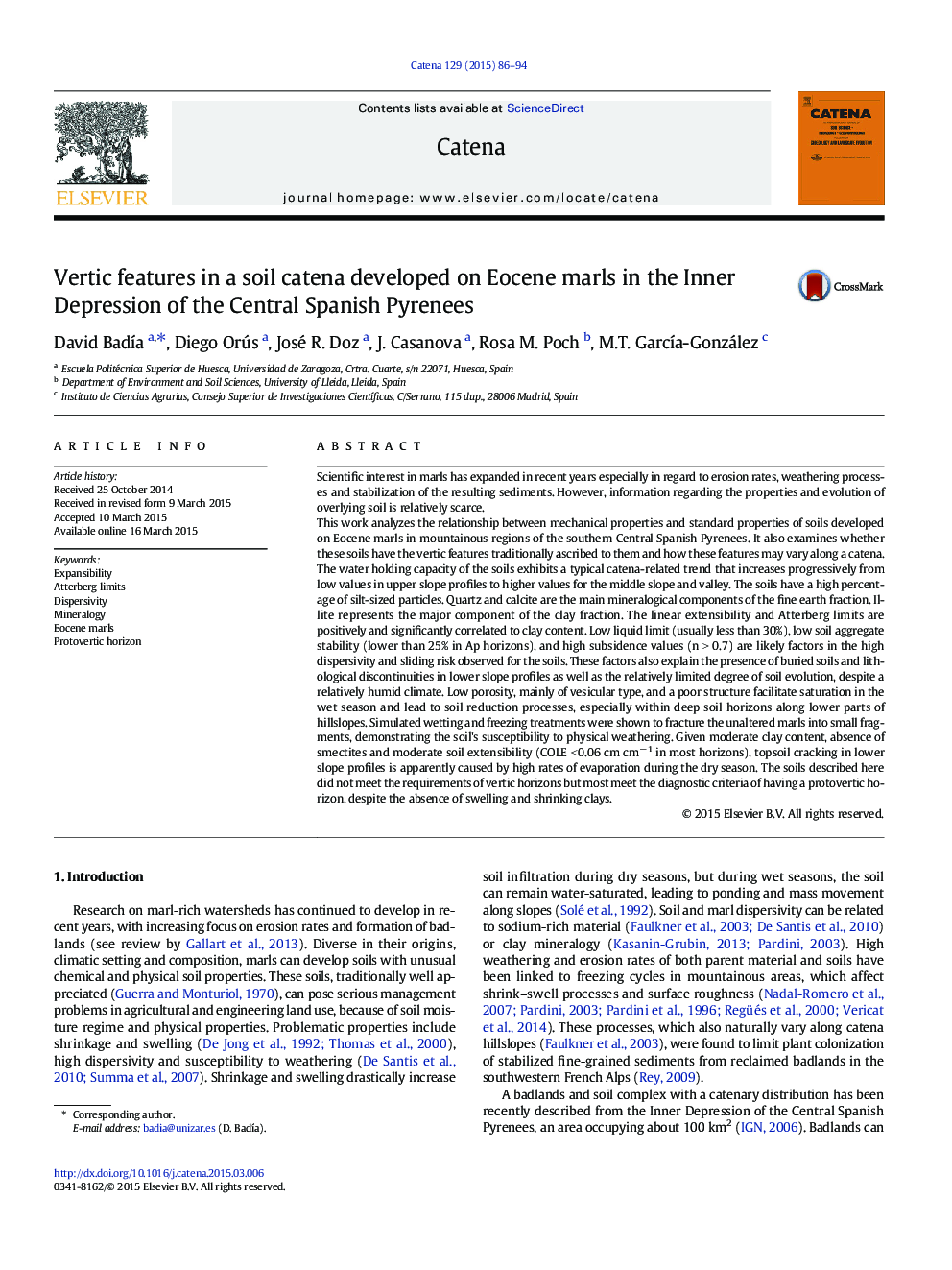| Article ID | Journal | Published Year | Pages | File Type |
|---|---|---|---|---|
| 4571267 | CATENA | 2015 | 9 Pages |
•Poor mechanical properties of soils and marls explain mass movement processes along hillslopes.•Marls are easily weathered by wetting–drying and freezing–thawing.•The soils and marls have illitic-rich clay mineralogy.•Topsoil cracking is found in the lower part of the hillslopes despite low COLE.•Protovertic horizons, but not Vertisols, can be defined in most of the studied soils.
Scientific interest in marls has expanded in recent years especially in regard to erosion rates, weathering processes and stabilization of the resulting sediments. However, information regarding the properties and evolution of overlying soil is relatively scarce.This work analyzes the relationship between mechanical properties and standard properties of soils developed on Eocene marls in mountainous regions of the southern Central Spanish Pyrenees. It also examines whether these soils have the vertic features traditionally ascribed to them and how these features may vary along a catena.The water holding capacity of the soils exhibits a typical catena-related trend that increases progressively from low values in upper slope profiles to higher values for the middle slope and valley. The soils have a high percentage of silt-sized particles. Quartz and calcite are the main mineralogical components of the fine earth fraction. Illite represents the major component of the clay fraction. The linear extensibility and Atterberg limits are positively and significantly correlated to clay content. Low liquid limit (usually less than 30%), low soil aggregate stability (lower than 25% in Ap horizons), and high subsidence values (n > 0.7) are likely factors in the high dispersivity and sliding risk observed for the soils. These factors also explain the presence of buried soils and lithological discontinuities in lower slope profiles as well as the relatively limited degree of soil evolution, despite a relatively humid climate. Low porosity, mainly of vesicular type, and a poor structure facilitate saturation in the wet season and lead to soil reduction processes, especially within deep soil horizons along lower parts of hillslopes. Simulated wetting and freezing treatments were shown to fracture the unaltered marls into small fragments, demonstrating the soil's susceptibility to physical weathering. Given moderate clay content, absence of smectites and moderate soil extensibility (COLE < 0.06 cm cm− 1 in most horizons), topsoil cracking in lower slope profiles is apparently caused by high rates of evaporation during the dry season. The soils described here did not meet the requirements of vertic horizons but most meet the diagnostic criteria of having a protovertic horizon, despite the absence of swelling and shrinking clays.
